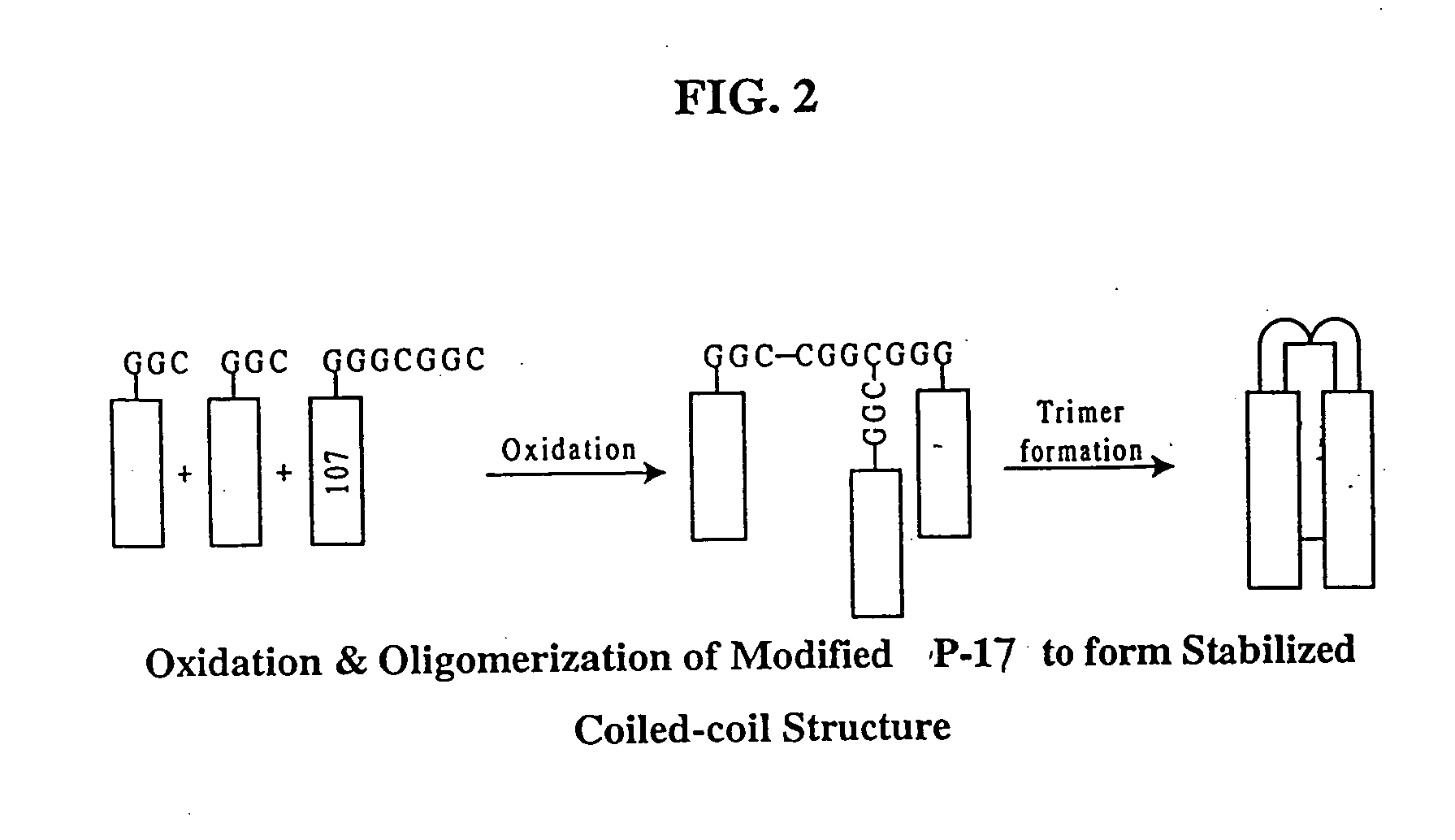Methods of eliciting broadly neutralizing antibodies targeting HIV-1 gp41
a broadly neutralizing antibody and hiv-1 technology, applied in the field of broadly neutralizing antibodies targeting hiv-1 gp41, can solve the problems of poorly understood immunogenic nature of gp41 and prior art attempts have so far met with minimal success
- Summary
- Abstract
- Description
- Claims
- Application Information
AI Technical Summary
Problems solved by technology
Method used
Image
Examples
example 2
Neutralizing Antibody Response to Peptides Modeling the C-Helical Region of gp41
[0193] This example measures the humoral response to antigens modeling the C-region of gp41. This work used synthetic peptides and a recombinant form of viral protein to characterize antibodies raised against the C-helical regions of gp41 of the viral TM.
[0194] These studies employ antibody binding assays to determine the ability of these materials to generate an immune response to various forms of envelope (native vs. denatured) and virus neutralization assays to characterize the antibody response raised against these gp41 domains. The complete panel of immunogens has generated data which allow new insight into the antigenic nature of gp41. Most encouraging have been the results from Guinea Pigs immunized with the peptide, P-1 8, modeling the C-helix entry domain (amino acid residues 643-678 of gp41). Specifically, two of three animals receiving this material exhibited a neutralizing antibody response a...
example 3
[0202] In a second study, 2 out of 3 animals immunized with P-18 neutralized the HIV-1 MN isolate in the assay using the MT2 cell line.
46 animal neut50 titer BT 004 1:21 BT 005 1:14
[0203] Also, one animal receiving P-18 coupled to KLH neutralized the MN isolate in the same assay format.
47 animal neut50 titer BT 007 1:15
example 4
[0204] The peptide used to generate the immune response in Example 2 includes within its sequence the linear epitope for the 2F5 monoclonal antibody. To determine if our immune response was against this same region of envelope, or involved a previously unidentified neutralizing epitope, a series of binding experiments was carried out to characterize the reactivity of our polyclonal sera. As can be seen in Table 1, at a dilution of 1:100 all animals exhibit good ELISA binding to the cognate immunogen (P-18). Sera from these animals also have substantial antibody titers against a peptide derived from the N-terminal P-18 sequence, P1 (Table VII). However, when tested at this same dilution against a pair of C-terminal P-18 analogs, P2 and P3 (Table VII) no ELISA reactivity was observed (Table VI). This result is significant in that the P3 peptide includes the linear binding region (ELDKWAS) for the 2F5 monoclonal antibody. These results demonstrate that the neutralizing activity in our ...
PUM
| Property | Measurement | Unit |
|---|---|---|
| concentrations | aaaaa | aaaaa |
| pH | aaaaa | aaaaa |
| structure | aaaaa | aaaaa |
Abstract
Description
Claims
Application Information
 Login to View More
Login to View More - R&D
- Intellectual Property
- Life Sciences
- Materials
- Tech Scout
- Unparalleled Data Quality
- Higher Quality Content
- 60% Fewer Hallucinations
Browse by: Latest US Patents, China's latest patents, Technical Efficacy Thesaurus, Application Domain, Technology Topic, Popular Technical Reports.
© 2025 PatSnap. All rights reserved.Legal|Privacy policy|Modern Slavery Act Transparency Statement|Sitemap|About US| Contact US: help@patsnap.com



